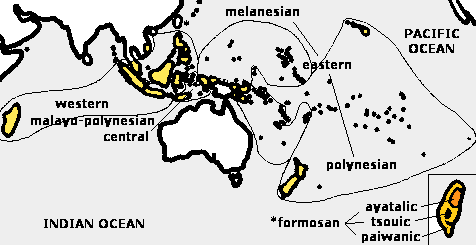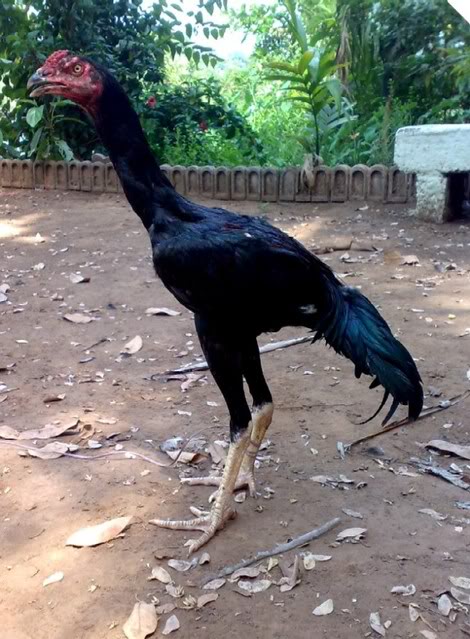What Grade Or Cross Of Asil In Naked Heel Does Best
COQS SAUVAGES / JUNGLE FOWLS :: COQS GEANTS & PREHISTORIQUES :: Gallus Giganteus / aesculapii / moldovicus / / karabachensis /tamanensis /kudarensis /europaeus /imereticus /meschtscheriensis /georgicus .
Page 1 sur 1
 What Grade Or Cross Of Asil In Naked Heel Does Best
What Grade Or Cross Of Asil In Naked Heel Does Best
http://www.asilclub.spruz.com/forums/?page=post&id=CFB932A4-3629-41B8-99F2-95400ED4D57E&lastp=1
mal_xai, here in the west and in publications concerning the Asil as a breed, it is pretty well established that we are talking about oriental birds found in the Indian sub-continent. There is a lot of information that would lead myself and many others to agree with sandman about the possibility that the oriental birds found in the region are very closely related and therefore, be considered Asils in the sense that they are from pure fighting lineage. Not all will agree on this view and would prefer to separate each variety by their region of origin. Pablo posted some information on another forum which will illustrate sandman's point, I believe, if I am reading him right.

* Note - search for Vietnam and Taiwan on this map- two of the homeland bases from which Austronesians frequently traveled to and from.
All the vertical games with their curious upright carriage and scowling faces; their short, dense and wide beaks and gular lappets are probably the descendants of a wild species of Junglefowl, that had been isolated in the Comoros Islands since the late Pliocene. That species, Gallus giganteus was very likely exceedingly tame and confiding- one that needed no domestication per se as it was the largest terrestrial bird in its ecosystem with very few natural predators as adults. It would have had to deal with all the reptilian and avian predators that inhabit these islands but there were no mammalian predators on the island other than Forest Hogs which were most likely introduced to the Comoros by the same Pygmies who also introduced these mammals to Madagascar in ancient times - during the Neolithic. These naturally tame birds were subsequently carried by Austronesian seafarers back to South East Asia. It is also likely that the Pygmies carried the birds with them as well and so they would have arrived in South East Asia even earlier. Many anthropologists believe that the Pygmies were one of the primary ancestors of the Austronesians. Regardless, the naked necked, giant game was in all likelihood, 'domesticated' before the Red Junglefowl.
Hybrids between it and the different subspecies of the Red Junglefowl would eventually form the rootstock of all domestic breeds. Theoretically speaking, it was probably the presence of the exceedingly tame Gallus giganteus that attracted the very wary wild junglefowl into the settlements of early human beings to begin with.
How closely related was G. giganteus to G. bankiva and G. gallus? - it was in all likelihood, a tiny remnant of their ancestral stock that once inhabited a much larger range that included East Africa and the Near East. The only populations to survive were those that lived in specific forest but little altered during the Pleistocene and in this one instance, that lived on a remote archipelago in the Indian Ocean. There were Green Peafowl, that were for all intensive purposes identical to those of South East Asia, living in East Africa right up to the end of the Pliocene. Gallus and Pavo fossils are generally found in the same deposits, suggesting a wide overlap of their genera in prehistory. Gallus karabachensis for example, was an enormous Junglefowl, about the size of a wild turkey, that was otherwise very similar to other junglefowl (morphologically speaking). Gallus karabachensis was native to the Caucasus, only becoming extinct after the Holocene.
http://richarddawkins.net/forum/viewtopic.php?f=4&t=38005
This photo sucks but the white neck hackles with the black body are reportedly what early strains of gamefowl bred from Malagasy produced when naked necks
hatched out chicks with feathered necks.

ultimate fowl press photo
While the amazing bird photographed here is technically Ga noi ( from the awesome ganoi.com website), we can clearly see that the Vietnamese have simply been the best stewards of Gallus giganteus. The Vietnamese have maintained and conserved this stock since their Neolithic age, around 8 thousand years ago. It should also be pointed out that Gallus giganteus, the theoretical wild ancestor of the "Giant Austronesian Game Fowl" for lack of a better term, were already present on the island of Reunion when members of the Vietnamese Royal family were deposed there. G. giganteus was carried to Reunion by Austronesian seafarers who also brought the species to Madagascar from the Comoros Islands where it was probably endemic. Vietnamese returning to Vietnam after the French imperialism was ended, brought this stock back to their homelands. There were already birds of this form in Vietnam but this new stock from Reunion would have greatly improved the Asiatic stock which would have been much admixtured with domestic Red Junglefowl.
This is the full page:
http://www.araucana.net/forum/viewtopic.php?f=4&t=249&start=20
mal_xai, here in the west and in publications concerning the Asil as a breed, it is pretty well established that we are talking about oriental birds found in the Indian sub-continent. There is a lot of information that would lead myself and many others to agree with sandman about the possibility that the oriental birds found in the region are very closely related and therefore, be considered Asils in the sense that they are from pure fighting lineage. Not all will agree on this view and would prefer to separate each variety by their region of origin. Pablo posted some information on another forum which will illustrate sandman's point, I believe, if I am reading him right.

* Note - search for Vietnam and Taiwan on this map- two of the homeland bases from which Austronesians frequently traveled to and from.
All the vertical games with their curious upright carriage and scowling faces; their short, dense and wide beaks and gular lappets are probably the descendants of a wild species of Junglefowl, that had been isolated in the Comoros Islands since the late Pliocene. That species, Gallus giganteus was very likely exceedingly tame and confiding- one that needed no domestication per se as it was the largest terrestrial bird in its ecosystem with very few natural predators as adults. It would have had to deal with all the reptilian and avian predators that inhabit these islands but there were no mammalian predators on the island other than Forest Hogs which were most likely introduced to the Comoros by the same Pygmies who also introduced these mammals to Madagascar in ancient times - during the Neolithic. These naturally tame birds were subsequently carried by Austronesian seafarers back to South East Asia. It is also likely that the Pygmies carried the birds with them as well and so they would have arrived in South East Asia even earlier. Many anthropologists believe that the Pygmies were one of the primary ancestors of the Austronesians. Regardless, the naked necked, giant game was in all likelihood, 'domesticated' before the Red Junglefowl.
Hybrids between it and the different subspecies of the Red Junglefowl would eventually form the rootstock of all domestic breeds. Theoretically speaking, it was probably the presence of the exceedingly tame Gallus giganteus that attracted the very wary wild junglefowl into the settlements of early human beings to begin with.
How closely related was G. giganteus to G. bankiva and G. gallus? - it was in all likelihood, a tiny remnant of their ancestral stock that once inhabited a much larger range that included East Africa and the Near East. The only populations to survive were those that lived in specific forest but little altered during the Pleistocene and in this one instance, that lived on a remote archipelago in the Indian Ocean. There were Green Peafowl, that were for all intensive purposes identical to those of South East Asia, living in East Africa right up to the end of the Pliocene. Gallus and Pavo fossils are generally found in the same deposits, suggesting a wide overlap of their genera in prehistory. Gallus karabachensis for example, was an enormous Junglefowl, about the size of a wild turkey, that was otherwise very similar to other junglefowl (morphologically speaking). Gallus karabachensis was native to the Caucasus, only becoming extinct after the Holocene.
http://richarddawkins.net/forum/viewtopic.php?f=4&t=38005
This photo sucks but the white neck hackles with the black body are reportedly what early strains of gamefowl bred from Malagasy produced when naked necks
hatched out chicks with feathered necks.

ultimate fowl press photo
While the amazing bird photographed here is technically Ga noi ( from the awesome ganoi.com website), we can clearly see that the Vietnamese have simply been the best stewards of Gallus giganteus. The Vietnamese have maintained and conserved this stock since their Neolithic age, around 8 thousand years ago. It should also be pointed out that Gallus giganteus, the theoretical wild ancestor of the "Giant Austronesian Game Fowl" for lack of a better term, were already present on the island of Reunion when members of the Vietnamese Royal family were deposed there. G. giganteus was carried to Reunion by Austronesian seafarers who also brought the species to Madagascar from the Comoros Islands where it was probably endemic. Vietnamese returning to Vietnam after the French imperialism was ended, brought this stock back to their homelands. There were already birds of this form in Vietnam but this new stock from Reunion would have greatly improved the Asiatic stock which would have been much admixtured with domestic Red Junglefowl.
This is the full page:
http://www.araucana.net/forum/viewtopic.php?f=4&t=249&start=20
COQS SAUVAGES / JUNGLE FOWLS :: COQS GEANTS & PREHISTORIQUES :: Gallus Giganteus / aesculapii / moldovicus / / karabachensis /tamanensis /kudarensis /europaeus /imereticus /meschtscheriensis /georgicus .
Page 1 sur 1
Permission de ce forum:
Vous ne pouvez pas répondre aux sujets dans ce forum